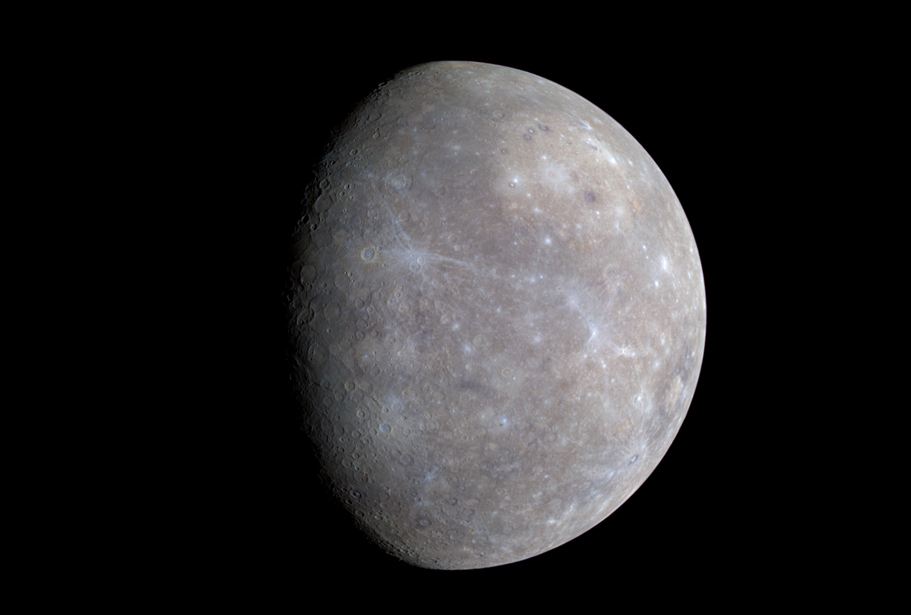NASA’s Mercury Surface, Space Environment, Geochemistry, and Ranging (MESSENGER) spacecraft became the first satellite to orbit Mercury on 18 March 2011. One of its goals has been to collect data on the planet’s magnetic field. A recent paper by Anderson et al. reports the first observations of Birkeland currents over Mercury’s northern hemisphere.
Birkeland currents, first proposed by Kristian Birkeland in 1908 and confirmed at Earth in the 1960s, are produced by the interaction of the solar wind with the planetary magnetic field. These electric currents flow along magnetic field lines, connecting a planet’s magnetosphere to its upper atmosphere. At Earth, the currents link to the ionosphere, but Mercury has no ionosphere, so it was not clear whether a similar current system could exist at Mercury.
Scientists first discovered hints of Birkeland currents at Mercury in 1997 from data acquired by Mariner 10 during flybys of the planet in 1974 and 1975. However, they could not determine whether there was a global-scale current system, similar to that seen at Earth. The question is especially intriguing because Mercury is essentially airless, and the way the currents would close, forming an uninterrupted path for the flow of charge, would necessarily be radically different from that at Earth. Basic questions remained: Are there persistent field-aligned currents at Mercury? If so, how do they close at low altitudes?
MESSENGER data from 23 March 2011 to 28 April 2012 have been studied to resolve this puzzle. MESSENGER’s magnetometer collected measurements that gave complete coverage of Mercury’s magnetosphere every 88 days. Researchers processed these data between latitudes 20°N and 83°N to resolve magnetic signals of Birkeland currents. From Ampere’s law, the researchers calculated the strength, density, and polarity of the currents. The results show that steady Birkeland currents are indeed present and are strongest between 60°N and 80°N, with a typical magnitude of 30,000 amperes.
Because there is no ionosphere at Mercury, the researchers modeled how the currents might close through the planet itself. The most likely solution, consistent with nominal electrical conductance values for silicates, is that the currents flow radially through the planet’s crust, which is made of low-conductivity material, and then close laterally at depths where the temperature, and hence electrical conductivity, is much higher than at the surface. The results imply a truly intimate connection between the planetary interior and its solar wind interaction. (Geophysical Research Letters, doi:10.1002/2014GL061677, 2014)
—Jessica Orwig, Freelance Writer
Citation: Orwig, J. (2015), Large-scale electric currents may flow through Mercury’s crust, Eos, 96, https://doi.org/10.1029/2015EO026419. Published on 18 March 2015.
Text © 2015. The authors. CC BY-NC 3.0
Except where otherwise noted, images are subject to copyright. Any reuse without express permission from the copyright owner is prohibited.

